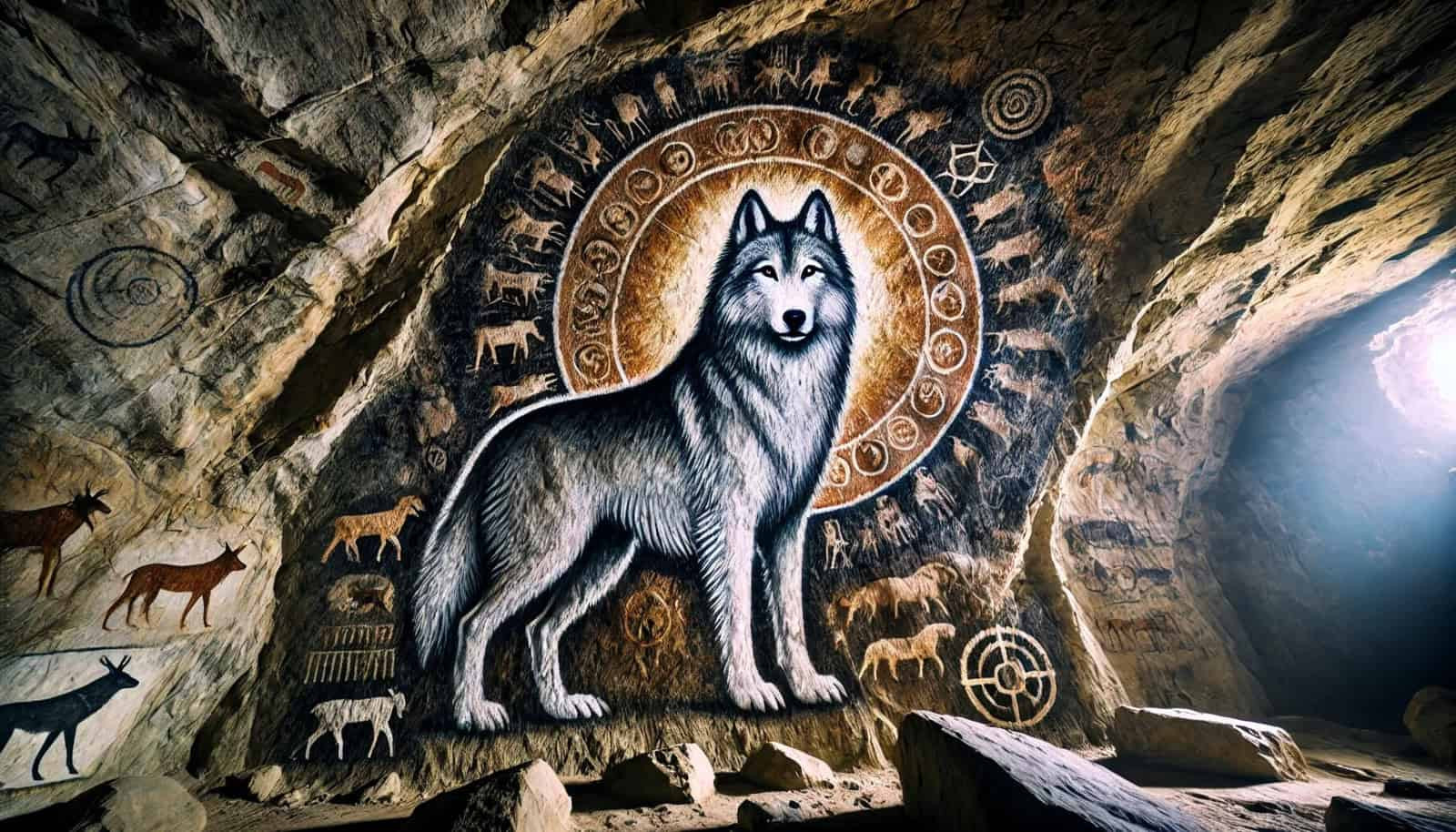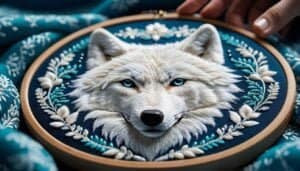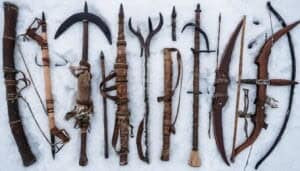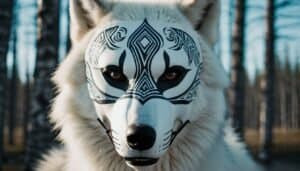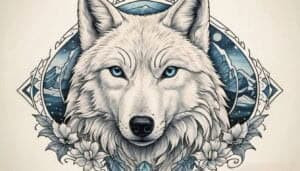Introduction
Arctic rock carvings and petroglyphs provide a fascinating glimpse into the lives of ancient Arctic inhabitants. These carvings, which often feature Arctic wolves, reveal much about the culture, beliefs, and daily activities of the people who created them
This article will explore the definition and types of Arctic rock art, the locations and ages of Arctic wolf petroglyphs, the techniques and styles used to create these carvings, and their cultural and social significance
Additionally, we will delve into the broader context of these carvings and review key research findings in the field
Understanding Arctic Rock Carvings and Petroglyphs
Arctic rock carvings and petroglyphs are ancient artworks that offer invaluable insights into the lives and cultures of early Arctic inhabitants. These carvings, etched into stone, often depict a variety of subjects, including animals, human figures, and abstract symbols
Among the most captivating of these images are those of the Arctic wolf, an animal that held significant importance in the daily and spiritual lives of the people who lived in this harsh and remote environment
Definition and Types of Rock Art
Rock art encompasses a range of human-made markings placed on natural stone
The two primary forms of rock art are petroglyphs and pictographs. Petroglyphs are images or symbols carved, pecked, or scratched into the rock surface, while pictographs are paintings or drawings applied with natural pigments
In the Arctic, due to the severe climate and limited availability of natural pigments, petroglyphs are far more common than pictographs
Petroglyphs in the Arctic often depict scenes from daily life, spiritual beliefs, and wildlife. These carvings serve as historical records, offering a glimpse into the prehistoric era when indigenous peoples navigated, hunted, and survived in the icy tundra
The Arctic wolf, frequently depicted in these carvings, was both a crucial part of the ecosystem and a powerful symbol in the mythology of Arctic cultures
Historical Context of Arctic Petroglyphs
The tradition of rock carving in the Arctic dates back thousands of years. Some of the oldest petroglyphs in the region are estimated to be around 4,000 to 6,000 years old. These carvings were created by the Paleo-Eskimo cultures, such as the Saqqaq and Dorset people, and later by the Thule people, ancestors of modern Inuit communities
The significance of rock carvings varied among different Arctic cultures. For many, they were a means of recording significant events, such as successful hunts, migrations, and encounters with other groups
They also held spiritual importance, often depicting animals believed to possess supernatural powers or serve as totems for clans. The Arctic wolf, in particular, was revered for its hunting prowess and its role in the natural order
Geographic Distribution
Arctic rock carvings are found across a broad geographic area, including regions in Canada, Greenland, Alaska, and parts of Scandinavia and Russia
Some of the most notable sites include:
Qajaa, Greenland: This site contains some of the oldest known Arctic petroglyphs, including carvings of wolves, bears, and seals. The Qajaa carvings are thought to be around 4,500 years old and provide a rich visual record of the Saqqaq culture
Kangiqsujuaq, Canada: Located in Nunavik, Quebec, this site features numerous petroglyphs, many of which depict Arctic wolves and other local fauna. The carvings are attributed to the Dorset culture, dating back about 2,000 to 3,000 years
Alta, Norway: While not within the traditional Arctic circle, the petroglyphs in Alta offer a northern European perspective on rock art, with carvings dating back to 4,200 BC. These carvings include depictions of wolves, reindeer, and human figures, highlighting the interconnectedness of Arctic and sub-Arctic cultures
The widespread distribution of Arctic rock carvings illustrates the extensive reach and influence of early Arctic cultures. These carvings provide a crucial link to understanding the movement, interactions, and shared traditions of indigenous peoples across vast and often inhospitable landscapes
Understanding Arctic rock carvings and petroglyphs requires a multidisciplinary approach, combining archaeology, anthropology, and art history. Researchers continue to study these ancient artworks, uncovering new details about the lives of the Arctic’s earliest inhabitants and the enduring significance of their artistic expressions
Arctic Wolf Petroglyphs: Locations and Ages
Arctic wolf petroglyphs provide an intriguing glimpse into the past, showcasing the significance of this animal in the lives and cultures of Arctic peoples
Understanding where these carvings are found and their approximate ages helps piece together the historical and cultural context in which they were created
Significant Sites with Wolf Carvings
Arctic wolf petroglyphs are scattered across various locations in the Arctic region, each site offering unique insights into the past cultures that inhabited these areas:
Kakvikk, Nunavut, Canada: This site is known for its extensive collection of rock carvings, including numerous depictions of Arctic wolves. The petroglyphs here are believed to be created by the Thule people around 1,000 years ago, showcasing their deep connection with the wildlife of the region
Wrangel Island, Russia: On this remote island in the Arctic Ocean, petroglyphs depicting Arctic wolves alongside mammoths and other fauna have been discovered. These carvings are estimated to be around 3,500 years old and provide evidence of the diverse wildlife that once roamed the island
Aasivissuit – Nipisat, Greenland: This UNESCO World Heritage site features numerous rock carvings, including those of Arctic wolves. The carvings here date back to around 2,200 BC, created by the Saqqaq culture, and illustrate the integral role of wolves in their daily life and spiritual practices
Dating Techniques Used
Determining the age of petroglyphs can be challenging, but several dating techniques are employed to estimate their creation period accurately:
Radiocarbon Dating: This method is used to date organic materials found in or around the petroglyphs, such as lichen or organic pigments used in rock paintings. While not directly dating the carvings themselves, it helps establish a timeframe for their creation
Lichenometry: By measuring the size of lichen growth on rock surfaces, researchers can estimate the minimum age of the petroglyphs. Lichen growth rates are relatively constant in Arctic environments, making this a useful tool for dating rock art
Stratigraphy: This involves analyzing the layers of rock and sediment around the petroglyphs. By studying the accumulation of materials over time, researchers can approximate when the carvings were made
By examining the locations and ages of these petroglyphs, researchers gain a better understanding of the historical context in which they were created
The widespread presence of Arctic wolf carvings underscores the significance of this animal across different cultures and time periods, reflecting a deep and enduring connection between humans and wolves in the Arctic
Creation and Styles of Arctic Wolf Carvings
Arctic wolf carvings found in petroglyphs are not only historically significant but also reflect the artistic techniques and styles of the cultures that created them
Understanding how these carvings were made and the artistic conventions used provides deeper insights into the craftsmanship and symbolic representations of Arctic peoples
Carving Tools and Methods
The creation of Arctic wolf petroglyphs involved the use of various tools and techniques, which have evolved over time but were primarily focused on the natural resources available in the Arctic environment:
Stone Tools: Early Arctic cultures used stone tools, such as chert and flint, to chip and peck away at rock surfaces. These tools were carefully crafted to create sharp edges capable of incising detailed lines and shapes into the hard rock
Bone and Antler Tools: In addition to stone, tools made from bone and antler were also employed. These materials allowed for more delicate work and finer details in the carvings
Hammerstones: Larger hammerstones were used in combination with the finer tools to create deeper grooves and more pronounced features in the petroglyphs. This method involved striking the hammerstone against the rock surface to remove larger chunks of material
The process of creating a petroglyph was labor-intensive and required significant skill and patience
Carvers would often work for extended periods, sometimes over several seasons, to complete a single artwork. The durability of the carvings, etched into the hard rock, has allowed them to withstand the harsh Arctic climate for thousands of years
Artistic Styles and Representations
The artistic styles and representations of Arctic wolves in petroglyphs vary across different cultures and time periods, reflecting diverse artistic conventions and cultural significances:
Realistic Depictions: Some Arctic wolf petroglyphs are highly detailed and realistic, showing wolves in lifelike poses. These carvings often emphasize the physical characteristics of the animal, such as the shape of the head, body, and tail, as well as the texture of the fur
Abstract Representations: Other carvings are more abstract, using simplified shapes and lines to suggest the form of a wolf. These stylized representations may focus on certain symbolic elements, such as the eyes or teeth, which held particular cultural or spiritual significance
Dynamic Scenes: Many petroglyphs depict Arctic wolves in dynamic scenes, such as hunting or interacting with humans. These narrative carvings provide insights into the behaviors and roles of wolves within the ecosystem and human society
The choice of style often depended on the intended purpose of the carving. Realistic depictions might have been used for recording events or creating detailed records of wildlife, while abstract and symbolic representations could have been part of spiritual or ceremonial practices
Common Artistic Conventions
Certain artistic conventions are commonly found in Arctic wolf petroglyphs, indicating shared cultural elements and artistic techniques across different Arctic communities:
Profile View: Wolves are often depicted in profile view, highlighting their distinctive silhouette and making it easier to convey movement and action
Exaggerated Features: Key features, such as the eyes, mouth, and tail, are sometimes exaggerated to emphasize particular attributes or to convey specific symbolic meanings
Contextual Elements: Wolves are frequently shown in context with other elements, such as humans, prey animals, and natural landscapes. These contextual elements help to situate the wolves within their environment and illustrate their interactions with other beings
The artistic conventions used in Arctic wolf petroglyphs reveal a deep understanding of the animal’s form and behavior, as well as a rich cultural tradition of storytelling and symbolism. By studying these carvings, researchers can gain insights into the values, beliefs, and artistic achievements of Arctic peoples
The creation and styles of Arctic wolf carvings highlight the skill and creativity of the artists who made them, as well as the significant cultural and symbolic roles that wolves played in Arctic societies
These petroglyphs remain a testament to the enduring relationship between humans and wolves in the harsh but beautiful Arctic landscape
Cultural and Social Significance of Arctic Wolf Carvings
Arctic wolf carvings hold profound cultural and social significance for the indigenous peoples of the Arctic
These petroglyphs are not merely artistic expressions but also serve as important symbols of spiritual beliefs, social structures, and human-wolf relationships. Understanding the cultural context of these carvings provides a deeper appreciation of their importance and meaning
Symbolism in Indigenous Cultures
In many Arctic cultures, the Arctic wolf is more than just a wild animal; it is a symbol of various spiritual and cultural beliefs. The wolf often represents qualities such as strength, resilience, and keen hunting skills, which are highly valued in the harsh Arctic environment:
Spiritual Guides: Arctic wolves were often seen as spiritual guides or totems. Indigenous peoples believed that wolves possessed supernatural powers and could guide humans through difficult journeys or provide protection against evil spirits
Clans and Lineages: Some Arctic communities identified themselves with the wolf, adopting it as a clan symbol or totem. This association with the wolf could signify the clan’s attributes, such as bravery and cunning, and reinforce social cohesion and identity
Hunting Talismans: Carvings of Arctic wolves were sometimes used as hunting talismans, believed to bring good luck and success in hunting expeditions. The presence of wolf imagery in hunting gear or ceremonial objects underscored the importance of wolves in hunting rituals and practices
Role in Mythology and Storytelling
Arctic wolves play a prominent role in the mythology and storytelling traditions of Arctic peoples. These stories often convey moral lessons, cultural values, and the intricate relationship between humans and the natural world:
Creation Myths: In some creation myths, wolves are depicted as creators or significant figures involved in the formation of the world or the establishment of human societies. These myths highlight the reverence and respect that indigenous peoples have for wolves
Heroic Tales: Many legends feature wolves as heroes or key characters who help humans in times of need. These tales emphasize the cooperative relationship between humans and wolves and the mutual benefits derived from this partnership
Cautionary Stories: Wolves also appear in cautionary tales that teach important life lessons. For example, stories about wolves’ hunting prowess might serve as warnings about the dangers of underestimating one’s adversaries or the importance of vigilance
Evidence of Coexistence and Cooperation
The petroglyphs depicting Arctic wolves also provide evidence of the coexistence and cooperation between humans and wolves in the Arctic. These carvings illustrate scenes that reflect the symbiotic relationship between the two species:
Hunting Partnerships: Historical accounts and archaeological evidence suggest that humans and wolves sometimes hunted together. Wolves’ superior hunting skills and humans’ advanced tools and strategies created a mutually beneficial arrangement that increased the chances of successful hunts for both
Shared Territories: The depictions of wolves in close proximity to human settlements or hunting grounds indicate that wolves and humans shared territories and coexisted peacefully. This shared space is a testament to the respect and understanding that Arctic peoples had for wolves
Cultural Exchange: The presence of wolf imagery in various aspects of Arctic culture, from clothing and tools to ceremonial objects, signifies a cultural exchange where humans learned from wolves and incorporated their traits and behaviors into their own practices
The cultural and social significance of Arctic wolf carvings underscores the deep connections between humans and wolves in the Arctic. These petroglyphs serve as enduring reminders of the spiritual, symbolic, and practical roles that wolves played in the lives of Arctic peoples
They highlight the profound respect and admiration that these communities had for the Arctic wolf, an animal that epitomized the strength and resilience needed to thrive in the challenging Arctic environment
Arctic Wolf Carvings in Context
To fully appreciate the significance of Arctic wolf carvings, it is essential to examine them within the broader context of Arctic rock art and their interactions with other elements
These carvings not only depict wolves but also offer insights into the cultural narratives, daily life, and interactions with other animals in the Arctic
Depictions of Wolves in Hunting Scenes
Arctic wolf carvings often feature scenes of hunting, showcasing the intricate relationship between humans and wolves. These scenes provide valuable information about the cooperative and competitive aspects of hunting in the Arctic:
Collaborative Hunts: Some carvings depict wolves and humans working together during hunts
These collaborative scenes suggest a mutual understanding and partnership where wolves would help track and corner prey, allowing humans to make the kill. This symbiotic relationship benefited both species, as wolves gained access to meat from successful hunts
Hunting Techniques: The carvings illustrate various hunting techniques employed by both wolves and humans
For example, humans might be shown using tools such as spears and bows, while wolves are depicted using their natural hunting skills to chase and capture prey. These depictions highlight the different but complementary skills of each species
Prey Animals: The prey animals featured in these hunting scenes include caribou, seals, and other Arctic wildlife. The presence of these animals in the carvings provides a snapshot of the diet and survival strategies of Arctic peoples and wolves. It also underscores the importance of these animals in the Arctic ecosystem
Other Animals in Arctic Rock Carvings
Arctic rock carvings feature a variety of animals besides wolves, offering a comprehensive view of the wildlife that inhabited the region and their significance to Arctic cultures:
Caribou: Caribou are one of the most commonly depicted animals in Arctic rock art. They were a vital source of food, clothing, and tools for Arctic peoples. Carvings often show caribou in migration patterns, highlighting their importance in the seasonal hunting cycles
Seals and Walruses: Marine mammals like seals and walruses are frequently represented in Arctic petroglyphs
These animals were crucial for their meat, blubber, and skins, which were essential for survival in the harsh Arctic climate. Carvings might depict hunting scenes, emphasizing the ingenuity and adaptability of Arctic peoples in exploiting marine resources
Bears: Bears, particularly polar bears, appear in many carvings, symbolizing strength and resilience. They were both respected and feared, often featuring in spiritual and mythological contexts as powerful beings or protectors
Comparative Analysis with Other Regions
Comparing Arctic wolf petroglyphs with rock carvings from other regions reveals both unique features and common themes in how different cultures represented wolves and their interactions with humans:
Similarities: Across various cultures, wolves are often depicted as important and respected animals
In many indigenous traditions, wolves symbolize strength, loyalty, and cunning, traits that are universally admired. The use of profile views and exaggerated features are common artistic conventions in both Arctic and non-Arctic wolf depictions
Differences: The primary differences lie in the environmental and cultural contexts
For instance, Arctic petroglyphs emphasize the harsh, icy landscapes and the specific prey animals found in the region. In contrast, wolf carvings from temperate regions might feature different flora and fauna, reflecting the local environment and hunting practices
Cultural Interactions: Some similarities in wolf depictions across distant regions suggest possible cultural interactions or shared influences
Trade routes and migration patterns could have facilitated the exchange of artistic styles and symbolic meanings, leading to convergences in how wolves were represented in rock art
Research on Arctic Wolf Rock Art
Arctic wolf petroglyphs are a fascinating subject of study, providing invaluable insights into the history, culture, and daily lives of Arctic peoples
Researchers from various disciplines continue to explore these carvings, employing advanced techniques and methodologies to uncover new information and preserve these ancient artworks for future generations
Key Studies and Findings
Several key studies have significantly advanced our understanding of Arctic wolf petroglyphs. These studies utilize a range of archaeological, ethnographic, and technological approaches to analyze and interpret the carvings:
Archaeological Excavations: Excavations at sites with Arctic wolf petroglyphs have revealed associated artifacts, such as tools, weapons, and ceremonial objects
These findings provide context for the carvings, offering insights into the technological capabilities, cultural practices, and daily lives of the people who created them
Ethnographic Studies: Ethnographic research, including interviews with indigenous communities, has been instrumental in understanding the cultural and spiritual significance of Arctic wolf carvings
These studies highlight the continuity of traditions and beliefs related to wolves, offering a deeper appreciation of their symbolic importance
Digital Imaging and Analysis: Advances in digital imaging and analysis have revolutionized the study of petroglyphs
Techniques such as 3D scanning, photogrammetry, and digital mapping allow researchers to create detailed records of carvings, facilitating their study and preservation. These technologies have revealed previously unnoticed details and provided new interpretations of the carvings
Significant findings from these studies include the identification of recurring motifs and themes in Arctic wolf petroglyphs, such as hunting scenes, spiritual symbolism, and depictions of daily life. Researchers have also documented the widespread distribution of these carvings across the Arctic region, underscoring the cultural significance of wolves to various Arctic peoples
Current Research Trends and Future Directions
The study of Arctic wolf petroglyphs is a dynamic and evolving field. Researchers are exploring new methodologies and interdisciplinary approaches to deepen our understanding of these ancient artworks and their cultural context:
Interdisciplinary Approaches: By combining archaeology, anthropology, art history, and environmental science, researchers are gaining a more comprehensive view of the relationship between humans and wolves in the Arctic. This interdisciplinary approach helps to contextualize the carvings within broader ecological and cultural frameworks
Climate Impact Studies: Researchers are increasingly focused on understanding the impacts of climate change on the preservation of petroglyphs
Arctic rock carvings are vulnerable to environmental degradation, including erosion, ice melt, and temperature fluctuations. Studies aim to assess these impacts and develop strategies to protect and preserve these invaluable cultural resources
Community Collaboration: Collaborating with indigenous communities is becoming a central aspect of research on Arctic wolf petroglyphs
Engaging with these communities ensures that indigenous knowledge and perspectives are integrated into the study and interpretation of the carvings. Collaborative projects also help to preserve and revitalize traditional knowledge, fostering a deeper and more respectful understanding of the cultural significance of the petroglyphs
Future research directions may include the application of new technologies, such as remote sensing and machine learning, to identify and analyze petroglyphs in inaccessible or previously unexplored areas. Additionally, ongoing efforts to document and digitize rock art will continue to enhance our ability to study and preserve these ancient artworks
Conclusion
Arctic rock carvings and petroglyphs, especially those depicting Arctic wolves, are invaluable artifacts that offer profound insights into the lives, beliefs, and artistic expressions of ancient Arctic peoples. These carvings are found across a broad geographic range, from Greenland to Russia, and date back thousands of years, illustrating the deep connection between humans and wolves in the Arctic
By examining the tools and techniques used to create these carvings, researchers gain a better understanding of the craftsmanship and dedication of the carvers. The artistic styles and conventions reveal how Arctic peoples viewed and represented wolves, highlighting the animal’s symbolic and practical significance in their culture
The cultural and social significance of these carvings is further underscored by their role in mythology, storytelling, and spiritual practices. Arctic wolf petroglyphs depict scenes of hunting, cooperation, and daily life, reflecting the intertwined fates of humans and wolves in the Arctic ecosystem
Ongoing research, employing advanced technologies and interdisciplinary approaches, continues to uncover new details about these ancient artworks. Collaboration with indigenous communities ensures that traditional knowledge and perspectives are integrated into the study, preserving the cultural heritage and fostering a deeper understanding of the significance of Arctic wolf carvings
Arctic wolf petroglyphs are not just historical artifacts; they are a testament to the resilience, creativity, and spiritual depth of Arctic peoples. These carvings remain a powerful symbol of the enduring relationship between humans and wolves, offering timeless lessons and insights into the human experience in one of the most challenging environments on Earth
